 W
WThe Baroque garden was a style of garden based upon symmetry and the principle of imposing order on nature. The style originated in the late-16th century in Italy, in the gardens of the Vatican and the Villa Borghese gardens in Rome and in the gardens of the Villa d'Este in Tivoli, and then spread to France, where it became known as the jardin à la française or French formal garden. The grandest example is found in the Gardens of Versailles designed during the 17th century by the landscape architect André Le Nôtre for Louis XIV. In the 18th century, in imitation of Versailles, very ornate Baroque gardens were built in other parts of Europe, including Germany, Austria, Spain, and in Saint-Petersburg, Russia. In the mid-18th century the style was replaced by the more less-geometric and more natural English landscape garden.
 W
WThe Royal Castle of Racconigi is a palace and landscape park in Racconigi, province of Cuneo, Italy. It was the official residence of the Carignano line of the House of Savoy, and is one of the Residences of the Royal House of Savoy included by UNESCO in the World Heritage Sites list.
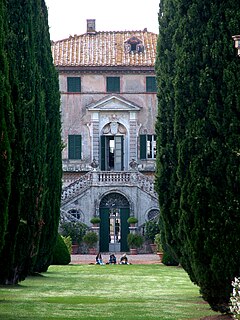 W
WVilla Cetinale is a 17th-century Baroque villa and Italiana gardens in Tuscany. The property is located in the hamlet of Cetinale near Sovicille, about 12 kilometres (7.5 mi) west of Siena, in Tuscany, Italy. The property is best known for the expansive gardens, arrayed in classic symmetry, as well as for its also formal woodland gardens.
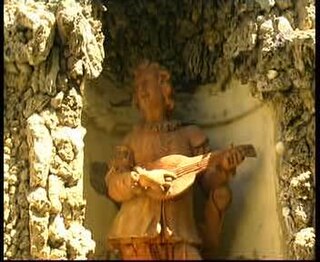 W
WVilla Gamberaia is a seventeenth-century villa near Settignano, outside Florence, Tuscany, Italy.
 W
WThe Grandi Giardini Italiani is an association of major gardens in Italy and Malta. Its members include some of the most important gardens in Italy and Malta.
 W
WThe House of the Faun, built during the 2nd century BC, was one of the largest and most impressive private residences in Pompeii, Italy, and housed many great pieces of art. It is one of the most luxurious aristocratic houses from the Roman republic, and reflects this period better than most archaeological evidence found even in Rome itself.
 W
WThe House of the Vettii is a domus located in the Roman town, Pompeii, which was preserved by the eruption of Mount Vesuvius in 79 AD. The house is named for its owners, two successful freedmen: Aulus Vettius Conviva, an Augustalis, and Aulus Vettius Restitutus. Its careful excavation has preserved almost all of the wall frescos, which were completed following the earthquake of 62 AD, in the manner art historians term the Pompeiian Fourth Style. The House of Vetti is located in region VI, near the Vesuvian Gate, bordered by the Vicolo di Mercurio and the Vicolo dei Vettii. The house is one of the largest domus in Pompeii, spanning the entire southern section of block 15. The plan is fashioned in a typical Roman domus with the exception of a tablinum, which is not included. There are twelve mythological scenes across four cubiculum and one triclinium.
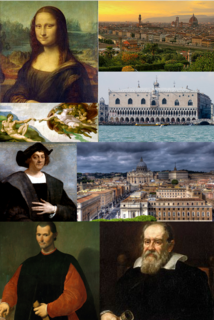 W
WThe Italian Renaissance, a period in Italian history that covered the 15th (Quattrocento) and 16th (Cinquecento) centuries, developed a culture that spread across Europe and marked the transition from the Middle Ages to modernity. The French word renaissance means "rebirth" and defines the period as one of cultural revival and renewed interest in classical antiquity after the centuries which Renaissance humanists labeled the "Dark Ages". The Renaissance author Giorgio Vasari used the term "Rebirth" in his Lives of the Most Excellent Painters, Sculptors, and Architects in 1550, but the concept became widespread only in the 19th century, after the work of scholars such as Jules Michelet and Jacob Burckhardt.
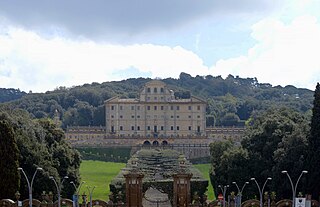 W
WThe Villa Aldobrandini is a villa in Frascati, Italy. Still the property of, and still lived in by, the Aldobrandini family, it is known as Belvedere for its charming location overlooking the valley toward the city of Rome.
 W
WVilla Borghese is a landscape garden in Rome, containing a number of buildings, museums and attractions. It is the third largest public park in Rome after the ones of the Villa Doria Pamphili and Villa Ada. The gardens were developed for the Villa Borghese Pinciana, built by the architect Flaminio Ponzio, developing sketches by Scipione Borghese, who used it as a villa suburbana, a party villa, at the edge of Rome, and to house his art collection. The gardens as they are now were remade in the late 18th century.
 W
WVilla Cimbrone is a historic building in Ravello, on the Amalfi Coast of southern Italy. Dating from at least the 11th century AD, it is famous for its scenic belvedere, the Terrazzo dell'lnfinito.
 W
WThe Villa Doria Pamphili is a seventeenth-century villa with what is today the largest landscaped public park in Rome, Italy. It is located in the quarter of Monteverde, on the Gianicolo, just outside the Porta San Pancrazio in the ancient walls of Rome where the ancient road of the Via Aurelia commences.
 W
WThe Villa Farnese, also known as Villa Caprarola, is a pentagonal mansion in the town of Caprarola in the province of Viterbo, Northern Lazio, Italy, approximately 50 kilometres north-west of Rome. This villa should not be confused with the Palazzo Farnese and the Villa Farnesina, both in Rome. A property of the Republic of Italy, Villa Farnese is run by the Polo Museale del Lazio.
 W
WVilla La Pietra is a renaissance villa in the hills outside Florence, in Tuscany in central Italy. It was formerly the home of Arthur Acton and later of his son Harold Acton, on whose death in 1994 it was bequeathed to New York University. The villa is now home to NYU Florence.
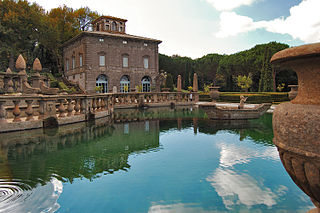 W
WVilla Lante is a Mannerist garden of surprise in Bagnaia, Viterbo, central Italy, attributed to Jacopo Barozzi da Vignola).
 W
WThe Villa Marlia or Villa Reale di Marlia — a late-renaissance palazzo or villa, and its estate's property that includes renowned gardens and adjacent villas and follies within the compound. It is located in Capannori, in the Province of Lucca, west of Florence, in the northern Tuscany region of Italy.
 W
WVilla Rufolo is a building within the historic center of Ravello, a town in the province of Salerno, southern Italy, which overlooks the front of the cathedral square. The initial layout dates from the 13th century, with extensive remodeling in the 19th century.